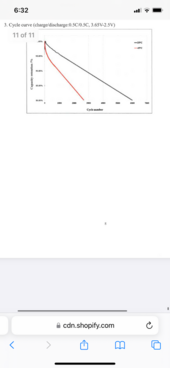the.shining
New Member
the goal is for the battery to discharge completely overnight...so that the battery can be re-filled the following day.I'm curious about the "discharging batteries" requirement.
My 18Kpv does exactly what you're saying above except I don't consider it "discharging" the battery, it just consumes power as needed from the battery. I guess that does, in fact, discharge the battery but not as a forced thing, but as an as-needed thing. I have disabled the "Forced Discharge" setting and this still gives me the behavior I desire.
I am sure that EG4 folks and everyone else understands this better than I do. Can you please tell me what you mean about discharging? Are you trying to force a discharge or just want the inverter to use the batteries at night? If it's the latter, my situation is working exactly like that.
of course if only 1 kwh is used overnight on a 15kwh battery, then the battery will only discharge 1 kwh.
after 20:00, all power should be coming from the battery first, GRID (bypass) second.
It doesn't have to be a forced discharge... as-needed is fine.
If this is what your 18k pv is doing, what settings are you using to accomplish? Grid-shaving, battery back-up, anything in particular?




